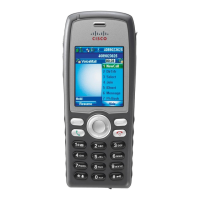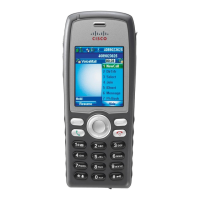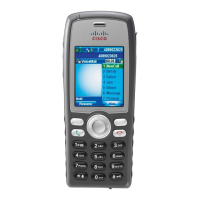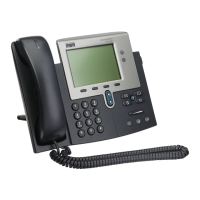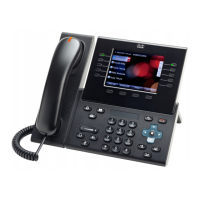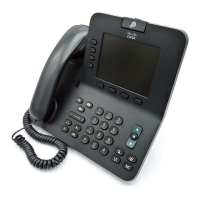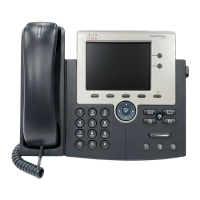10-4
Cisco Unified Wireless IP Phone 7925G Administration Guide for Cisco Unified Communications Manager 7.0(1)
OL-15984-01
Chapter 10 Troubleshooting the Cisco Unified Wireless IP Phone 7925G
Resolving Startup and Connectivity Problems
• Creating a New Configuration File, page 10-7
Registering the Phone with Cisco Unified Communications Manager
A Cisco Unified Wireless IP Phone 7925G can register with a Cisco Unified Communications Manager
server only if the phone has been added to the server or if auto-registration is enabled. If you see the
error message, “Registration Rejected,” review the information and procedures in the
“Adding Users to
Cisco Unified Communications Manager” section on page 7-19 to ensure that the phone has been added
to the Cisco Unified Communications Manager database.
To verify that the phone is in the Cisco Unified Communications Manager database, choose Device >
Phone > Find from Cisco
Unified Communications Manager Administration to search for the phone
based on its MAC Address. (To determine the MAC address of a phone, see the
“Viewing Device
Information” section on page 8-4.)
If the phone is already in the Cisco Unified Communications Manager database, its configuration file
may be damaged. See the
“Creating a New Configuration File” section on page 10-7 for assistance.
Checking Network Connectivity
If the network is down between the access point and the TFTP server or Cisco Unified Communications
Manager, the phone cannot start up properly. Ensure that IP connectivity exists between the WLAN and
the Cisco
Unified Communications Manager and TFTP servers.
Verifying TFTP Server Settings
The Cisco Unified Wireless IP Phone 7925G uses the TFTP server setting to identify the primary TFTP
server to use. If the TFTP server does not respond to the request, then the Communications Manager1
(CM1) shows as TFTP_AS_CM if the phone has not registered with Cisco
Unified Communications
Manager before.
Note If the phone has previously registered with Cisco Unified Communications Manager, the
Cisco
Unified Communications Manager list information is cached in memory. If TFTP fails,
you must power cycle the phone to connect to the TFTP server.
The phone tries to create a TCP connection to the TFTP IP address and then to the gateway. If
Cisco
Unified Communications Manager service is not running on the TFTP server, or if SRST is not
running on the gateway, the wireless
IP phone may continually cycle while attempting to contact the
identified TFTP
server.
The Cisco Unified Wireless IP Phone 7925G does not cache the IP information passed from the DHCP
server, so the TFTP request must be sent and responded to every time the phone power cycles.
If you have assigned a static IP address to the phone, you must manually enter this setting. See the
“Configuring IP Network Settings” section on page 4-23.
If you are using DHCP and Cisco Unified Communications Manager, Release 4.x, the phone obtains the
address for the TFTP server from the DHCP server. Check the IP address configured in Option 150 or
Option 66. Refer to Configuring Windows 2000 DHCP Server for Cisco Unified Call Manager available
at this URL:
http://www.cisco.com/en/US/products/sw/voicesw/ps556/products_tech_note09186a00800942f4.shtml
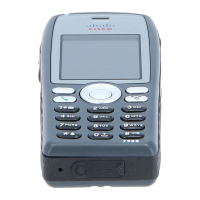
